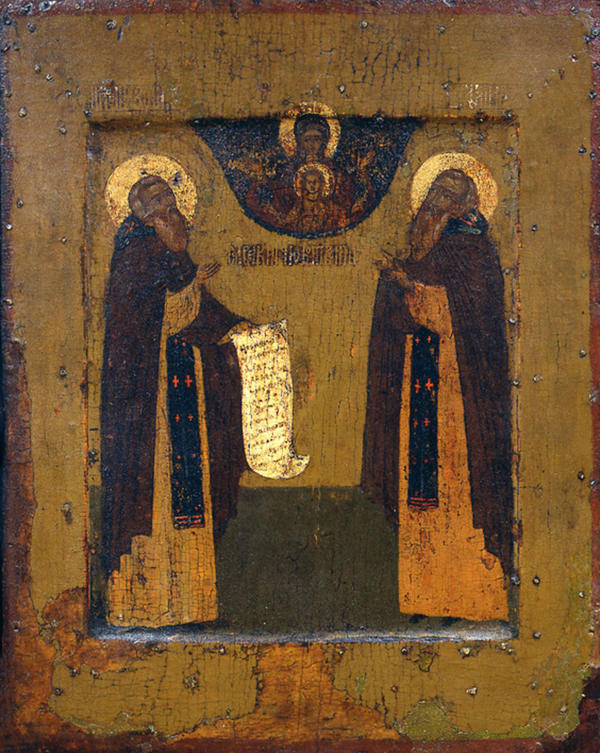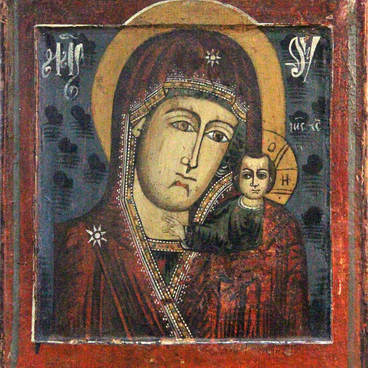The icon of Our Lady of the Sign with Ss. Zosimas and Sabbatius of Solovki was painted in the second half of the 17th century in Obonezhje — the name for a part of the Novgorod land that was situated around Lake Onega and stretched from Lake Ladoga to the White Sea. It was in the Novgorod principality that the first icons of Russian saints appeared.
Our Lady of the Sign with Ss.Zosimas & Sabbatius
Время создания
Second half of the 17th century
Размер
30x24,5 cm
30х24.5x2 cm
30х24.5x2 cm
Техника
Wood, tempera
0
Открыть в приложении#1
Unknown author
Our Lady of the Sign with Ss. Zosimas and Sabbatius
#4
#2
Iconography and technique
#3
In the upper part of the icon, the painters depicted Our Lady of the Sign symbolizing the imminent birth of Jesus Christ. The Virgin is depicted with her hands raised in prayer and an image of the Savior Emmanuel upon her chest. In iconography, Emmanuel is the name of Jesus in his childhood and adolescence. In other icons, he would be depicted as an adult, at the age of 33, when he was already preaching.
Most of the icon is occupied by the figures of the Venerable St. Zosimas and St. Sabbatius, the founders of the Solovki Monastery. St. Sabbatius of Solovki is on the right. In 1429, with a novice called Herman, he arrived at the rocky islands of Solovki to build a memorial cross and a monastic cell. Other hermits began to go there, but after the death of the spiritual elder, the place became deserted. The monastery was revived by Venerable St. Zosimas in 1436. A century later, both elders were canonised. In the icon, St. Zosimas is painted on the left. Both elders are clothed in monastic robes and kukols — head-covering veils attached to their robes like hoods.
#5
The tradition of depicting Russian saints in icons traces its origins to the Novgorod principality at the time of the Mongol invasion. Trade routes with Byzantium were disrupted, and icons were now painted by local artisans. With permission of the clergy, artists altered canonical iconographic subjects. Over time, the Novgorod iconographic school developed, setting itself apart by a sharper style, strict symmetry of paired icons, a special posture of saints and type of faces.
The icon Our Lady of the Sign with Ss. Zosimas and Sabbatius of Solovki was painted on a wooden panel primed with levkas (gesso) — a mixture of chalk, glue, and oil. Icon painters used tempera — paint made of a powder colouring pigment and egg yolk. Researchers suggest that the image is a copy of an earlier icon of Saints Zosimas and Sabbatius, which was also created in the Russian North and is currently housed in Yaroslavl Museum of Fine Arts. All the elements, even the details of the clothing, are identical in these two icons.
#6
State Museum of Fine Arts of Khanty-Mansiysk
читать дальшескрыть
00:00
00:00
1x
Our Lady of the Sign with Ss.Zosimas & Sabbatius
Время создания
Second half of the 17th century
Размер
30x24,5 cm
30х24.5x2 cm
30х24.5x2 cm
Техника
Wood, tempera
0
Открыть в приложении
Поделиться



